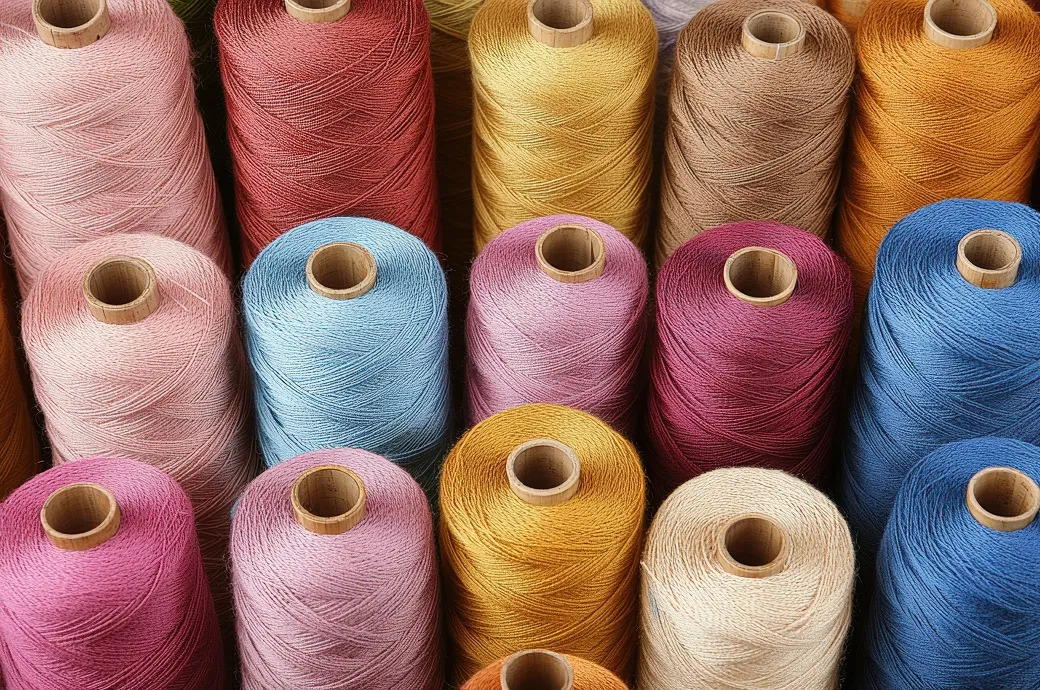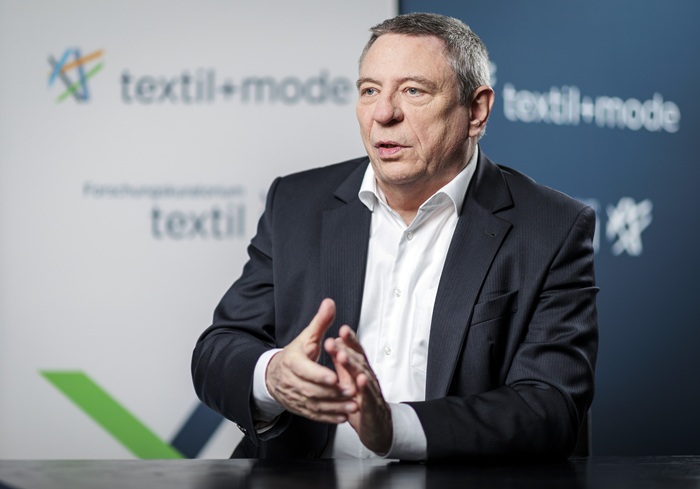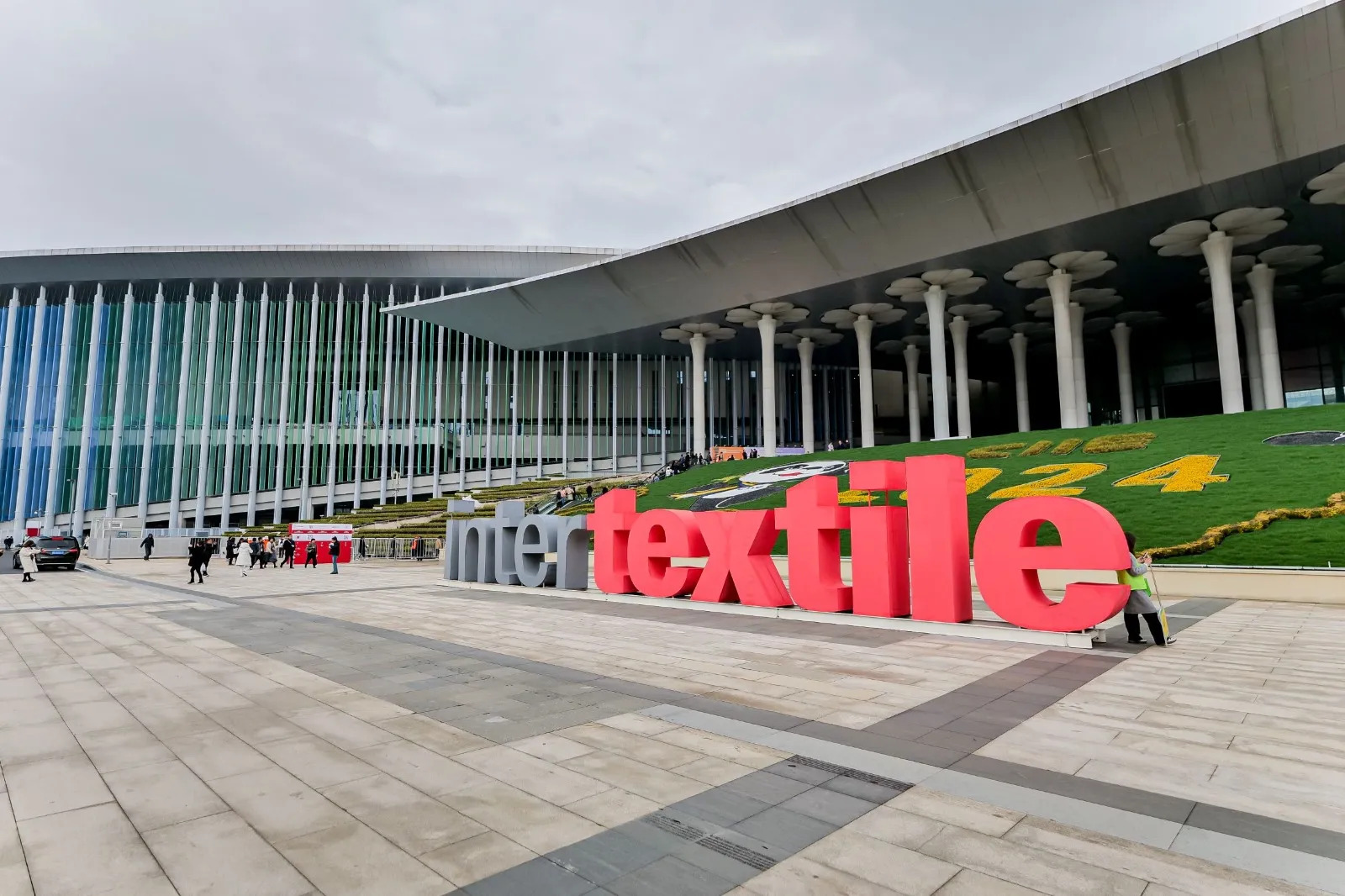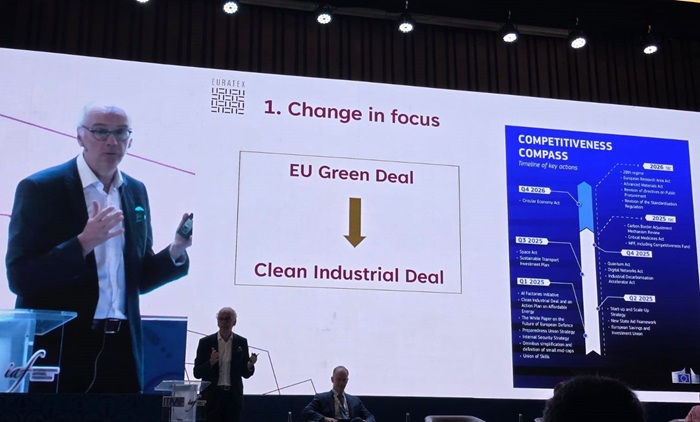FW
When textile veterans like Arvind are gradually focusing on brands and retail business, Ahmedabad-based Nandan Denim (NDL) continues to add denim fabric capacities to take advantage of the demand in domestic as well as overseas markets.
NDL has increased its denim capacity from 76 million metres per annum in 2014 to 99 million metres per annum by March 2015. The company now aims to further increase it to 110 million metres per day by March 2016. NDL anticipates capacity expansion to boost contribution from exports to about 30 per cent of the overall business in two years. Along with denim fabric production, the aim is also to expand it spinning and shirting segments. The company's export revenues were 13 per cent of the overall business of Rs 281 crores in the June quarter.
NDL will invest Rs 612 crores on capacity expansion through debt and fresh equity ratio of 70-30 respectively. Company's debt-to-equity ratio stands at 2:1. NDL produce different varieties of denim fabrics. Of its total denim production 50 per cent is driven by pure cotton denim and the rest 50 per cent is a blend with man-made fibre.
However, brokerage firms like Nirmal Bang are maintaining a cautious approach on the company's export ambitions. “Export incentives given by the government have declined by around two per cent from about 7-9 per cent earlier to about five to seven per cent now. Therefore, we believe this will have a negative impact on NDL’s export margin,” Nirmal Bang stated in its recent Institutional Equities report on NDL. www.nandandenim.com
While imports to Europe and US markets showing signs of improving by the end of this fiscal, Indian exporters are seeking government help to create a conducive environment to boost exports. Declining rupee against the dollar, experts feel can work in favour of exporters.
However, D K Nair, Secretary General of the Confederation of Indian Textile Industry (CITI) feels, with the global crisis hitting India’s key markets, demand has slowed down. At the same time, markets like the US and Europe, are showing signs of improvement. To take advantage of this situation, the government must step in and resolve issues affecting cotton and cotton yarn. Nair says the changing Chinese import policy has led to surplus stocks and forced many spinning mills to work on lesser number of shifts and some to even close down.
In the case of garments and apparels, Indian exporters have to pay 16 per cent import duty on shipments to its largest market Europe, while competitors like Cambodia, Vietnam and Pakistan enjoy zero per cent duty. Agrees K Selvaraju, Secretary General of South Indian Mills Association (SIMA). He says that the government should help in increasing exports of garments and made-ups to help segments like cotton and cotton yarn. He added that the fabric units could increase their production for the garment industry and absorb the surplus stocks of yarn. Also most spinning mills are facing working capital crunch with subsidies under the technology upgradation fund scheme (TUFS) still pending. Subsidy amounting to Rs 3,000 crores has been pending since 2010 and the incentive under focus market scheme has also been withdrawn.
Release of payment of subsidies, he feels can at least solve the working capital problems of mills. Even investments in Tamil Nadu, which saw annual investments of over Rs 20,000 crores prior to 2008, have dried down. At the recent Global Investors Meet in Chennai, the industry could garner a meagre 0.8 per cent of the total investment commitments which amounted to Rs 1,955 crores.
www.citiindia.com
Indian exports of silk waste yarn increased by 141.08 per cent in fiscal 2011. There was a slump of 47.60 per cent in ’12. In fiscal year 2012-13, exports grew by 1.19 per cent, while in ’14 growth was 70.33 per cent. In 2014-15, exports once again dipped by 28.57 per cent. The key nations to which India exports yarn spun from silk waste are Indonesia, Singapore, South Korea, Thailand, Vietnam, Cambodia, Philippines, Laos, South Africa, Guyana, Iran, Malaysia, Hong Kong, Japan, Belgium, France, Spain, Bangladesh and Nepal.
Silk waste includes all kinds of raw silk which may be unwindable and hence, unsuited to the throwing process. Since the product has been degummed it can be easily dyed. Silk waste is produced from the reeling process. The fine yarn is removed from cocoons and the left over is called silk waste. Thrown silk waste happens when things go wrong at the mill. The fibers get tangled around the machinery or in some other way become unable to be used for finished yarn.
Throwster silk yarn waste is processed in order to impart optimum strength. The recycled yarn is made of throwster yarn waste that can be used in carpets, knittings, embroidery and other fancy lace works.

Business matters most
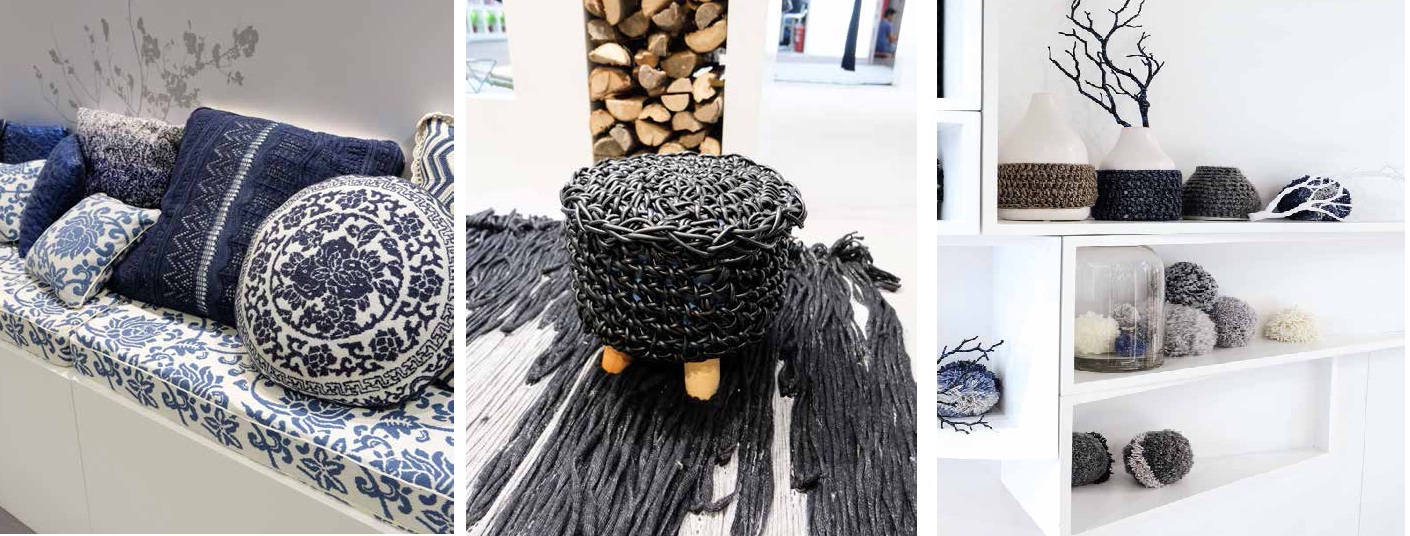
The outcome of the fair indicated that medium-to-top level spinning industry is doing well and knitwear companies that structured and adapted to buyers’ demands are not overly concerned by a slowdown in the sector. Spinners and knitwear manufacturers adjust their production to fit the needs of global markets, with brands that also have to re-adjust their positioning and strategy.
Chinese visitors totalled 8,049, a stable number compared to March 2015, and foreign visitors were 2,049, a progression of 32 per cent over the March session. Hong Kong showed a high progression with 638 visitors compared to 373 for the March session. Europe showed a slightly higher number of visitors with 318 versus 252 for the former show.
Spinexpo continues to screen the potential VIPs among its visitors and owing to the work conducted by its promotion offices, is now able to upgrade Chinese companies as well as brands from outside China. The fair continued to renovate presenting trend information, slowly moving away from swatches displayed by colour stories to more focus on yarn categories, uses and their performance.
Zones, programs set the trend
Divided into three zones, the main trend area started with an in-depth active wear presentation, covering shoes, socks, and active sport starting with a soft dance/yoga section, on to endurance and performance. This part of the trend area showed visitors how to start with a yarn, go through the machinery process and end up with the finished product with the accurate explanation from the stylist Eva De Laat, in cooperation with Santoni at their Shanghai Centre.
The partnership between machinery, spinner and stylist is a direction that Spinexpo intends to develop, moving away from general trend directions based on colours and stories. The garments at the ‘SpinExclusive’ part of the trend area brought together a spinning mill, a knitwear manufacturer working on new machinery software and one stylist. It showed that knitwear manufacturers have to discover what is on offer, learn how to process the machine and what to expect from them. Many knitwear manufacturers were present in this area, from Fenix Hong Kong to Yanfan China; spinners included Consinee, Top Line, Zhongding, Yarns & Colors, Hubo, UPW, Best Leader, and stylists Paula Cheng, Steven Oo, Rory Longdon, Uki Lau, Iben Hoej and Felicity Brown.
Swatches from Rory Longdon featured techniques on a number of new software developments and completed the presentation. The swatches displayed by colour story were presented for the last time during this session, and will be replaced by a presentation based on type of yarns, functionality, in the same way as Spinexpo presented it in the active presentation. The former marketing area was transformed into the ‘spinners’ products orientation’ and presented the spinners’ own developments and new products, with a special focus on interesting novelties, coatings, blends and new fibres.
The fair also presented the ‘Knitted Room’, a project put forward by Yarns & Colors and Aussco, introducing its InDHouse project. The second part of the presentation was designed by Steven Oo and featured a bedroom and study room decorated with knitted and yarn constructions, with the help of Yanfan and Santoni. The idea was well-received. Woolmark presented its new products orientation with two seminars: the Wool Lab A/W 2016/17 and the latest innovations in Merino wool including Merino retract, wool denim jersey, wool denim knits, warp knits and mottled Merino.
www.spinexpo.com
Itema, the largest privately-owned manufacturer of best-in-class weaving machines, spare parts and integrated services, for the first half of 2015 reported robust growth of a CAGR of 13 per cent. The company released the financial results with official launch of its new terry weaving machine, the R9500terry as well as a new training centre, Itema Campus.
“These are exciting times for us at Itema,” said Carlo Rogora, CEO of Itema Group, adding, “Our company’s fundamentals are solid. Our manufacturing facilities are top-notch. We have never been more committed to provide the best possible technology to fulfil our customers’ needs.”
In the first six months of the year, Itema sold 17 per cent more weaving machines compared to same period last year, increasing the group turnover from weaving machines by 24 per cent, and the consolidated turnover including spare parts and other company transactions by 20 per cent year-on-year. Since 2012, the company has continuously grown, more than doubling the volumes of textile machines sold worldwide.
Both EBITDA and EBT increased more than 20 per cent year on year and seamless cash flow production too increased, month after month. The newly launched R9500terry loom was presented in a series of events in July and September with a punchline ‘Weaving terry like never before’, to a select panel of worldwide customers.
On the occasion of the R9500terry launch, the company also opened doors of ‘ItemaCampus’, the new, next-generation training centre. The new and enhanced facilities will help, as the company prepares to take bookings for customers before, during and after ITMA, taking place in Milan from November 12 to 19, 2015. At ITMA, the company will showcase some of its latest rapier and airjet models in a wide range of weaving applications.
“We have high hopes for the upcoming ITMA and beyond, but, even if the order portfolio is still quite robust, the outlook for the remainder of the year remains uncertain. Along with the continuing and in some cases worsening, political instabilities in some areas, recent economic struggles in China caused significant changes in our customers’ attitude in investments,” added Rogora.
www.itemagroup.com
Liva brand from Birla Cellulose having a gamut of fashion wear comprising of western wear, skirts, kurtis and palazzos showcased its Spring/Summer’16 range of knits at Yarnex, the India International Yarn Exhibition at Tirupur. Tirupur, the leading knitwear hub consumes upwards of 1,300 tonnes of yarn per day. Though the focus has been on cotton in the past, Tirupur has increasingly innovated in manmade cellulosic fibres and its blends. Birla Cellulose has partnered leading knitwear manufacturers and wet processors launched garments in viscose spandex, cotton viscose, viscose polyester, cotton modal and 100 percent modal fabrics, which are supplied to most of the leading brands across the world.
Liva S/S’16 knitwear collection at Yarnex included technological innovations like Birla modal in blends with spandex, cotton, Amicor, wool, linen, PSF ,PTY, spun-dyed viscose in 100 percent and in multi-coloured melanges with potential to save water and energy and emit no effluent load. Siro compact yarns in viscose and modal exclusively offered by Winsome Yarns, Chandigarh and Rangavilas, Coimbatore were also displayed during the event.
Liva Accreditation Partner Forum (LAPF) members showcased their viscose and modal yarns and fabrics with an assurance of 100 percent quality, inspection and service. LAPF is a community of spinners, fabricators and processors, who work closely with Birla Cellulose on innovation, quality and technology to deliver Liva fabrics to consumers.
A delegation of more than 20 representatives from China's fashion and textile industry is being hosted by WGSN, the global foresight business specialising in consumer, fashion and design trends and insights, during the New York Fashion Week 2015. Some of the country's largest garment manufacturers and up-and-coming apparel retailers will be a part of the delegation. The China Textile Information Center (CTIC), is leading the delegation. The CTIC serves China's huge and growing fashion and textile industry of over 20,000 companies.
The delegation would gain deeper insights about US fashion industry and meet with the New York City Economic Development Corporation (NYCEDC) to explore opportunities for investment in the US and China, while in New York. The delegates would also attend informational sessions at WGSN, King & Partners and Parsons The New School For Design. Besides, they would attend the annual Parsons MFA Fashion Runway Show on September 16, 2015, which is sponsored by WGSN.
Sun Ruizhe, Vice-President of CNTAC (the National Textile Apparel Council of China) and Chairman of CTIC feels this a unique occasion for leaders of the Chinese apparel and textile industry to absorb all they can about US fashion industry. Besides its a mutually beneficial opportunity to discuss the huge potential for growth and investment.
Eric Johnson, Director Fashion and Arts Teams, New York City Economic Development Corporation warmly welcomed the representatives of China's textile industry. NYCEDC is upbeat about a meaningful dialogue in support of its mission to realise New York City as the global model for inclusive innovation and economic growth, and to facilitate investments that grow and diversify the City's local manufacturing community.
Amid government's decision to devaluate yuan against the dollar, China’s exports of textiles and apparel further witnessed a double-digit decline in July even after it managed to narrow month-by-month losses in the second quarter.
According to latest figures released by the General Administration of Customs, China’s exports of textiles and apparel dropped by 10.2 per cent year-on-year in July to $30.35 billion. The export of textiles declined by 5.9 per cent to $9.51 billion, while that of apparel dropped by 12.4 per cent to $ 17.74 billion.
Experts point out that since both China’s Export Leading Indicator and New Orders Index of China’s foreign trade declined in July, the prospects of textile and apparel exports in the third quarter are not optimistic. In the first seven months of this year, China’s exports of textiles and apparel totaled $155.62 billion, down 4.4 per cent from a year earlier. The export of textiles dropped by 1.5 per cent to $62.42 billion, while the export of apparel declined by 6.2 per cent to $ 93.2 billion.
However, despite all reports and studies pointing at how falling currency, rising raw material and labour costs in China are impacting the country’s apparel market, forecast by Euromonitor says, the country will exceed the United States to become the world’s largest apparel market by 2019.
Customs.gov.cn
Bangladesh has launched a project to train workers and mid-level managers in different sectors over the next five years. This is necessary to achieve its development goals. More than 43,800 workers and mid-level officers will be trained in phases. The length of the training courses will vary from a month to six months and the educational qualification for the trainees has been fixed between primary school certificates and graduation levels.
Workers will receive training on 15 different subjects, including enhancing managerial capacity, supervision, technology, sewing operations and computer literacy. The first phase of the project has already been completed, under which 2,096 garment workers were given training.
Training institutions will have to manage jobs for 70 per cent of the trainees after completion of the certificate courses. If the training partners fail to do so, their performance would be considered poor. In the absence of skilled trainers in Bangladesh, foreigners take away billions from the country by way of salaries and allowances.
Productivity improvement for garment workers is very important for achieving the country’s export target of 50 billion dollars by 2021. Every year some two million people enter the job market in Bangladesh but most of them do not have the necessary skills.
For the first half of 2015, El Salvador textile exports were 21 per cent more than in the first half of 2014. Exports of readymade apparel were up five per cent. The annual increase in foreign sales was seven per cent while it aAt the end of 2014 the increase was only 0.4 per cent.
For the first half of the year 2015, 12 per cent of sales abroad were those of textiles and 88 percent were those of readymade. Of sales abroad in the first half of this year, 77 per cent went to the United States, 12 per cent to Honduras, four per cent to Guatemala and six per cent to other markets. Exports of cotton shirts generated 28 per cent revenues and cotton socks generated seven per cent.
The country has established a vertically integrated synthetic textile manufacturing cluster. The cluster includes: polyester and nylon yarn, circular and warp knit stretch fabrics. A strategic relationship has been developed between textile mills, garment factories and retailers that would reduce costs, increase efficiency and flexibility.
Factories and mills have engaged in capacity building programs and meeting compliance standards.


